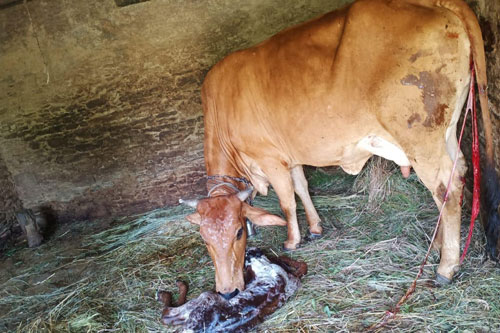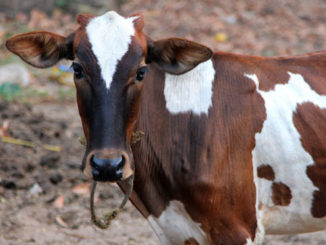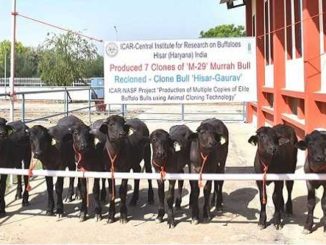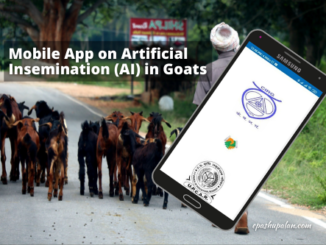The induction of labor at or near term in domestic animals may be required for some physiologic and pathologic reasons. Planned deliveries allow closer attendance at parturition and reduce accidental deaths by dystocia and crushing by the mother (sow). Pathologic reasons for induced parturition include hydrops of fetal membranes, prepubic tendon rupture and maternal ill health. Any parturition induction regime must fulfill some prerequisites:
- The neonate must be viable and the dam must lactate normally
- The method must be reliable and delivery must be predictable and
- It must be safe with no adverse effects on either the dam or her young.
Unfortunately, no single drug can achieve this entire criterion in all the domestic animals, therefore they are described separately. Ruminants Exogenous glucocorticoid administered to the mother can be used to induce parturition in the cow, sheep and goat. Likewise glucocorticoid can induce parturition in the buffalo and camel. When administered about a week or less before term they are generally effective, although the timing of parturition is not very precise in sheep. In the cow, sheep and goat parturition can be induced with exogenous estrogens. Similar to cows parturition can be induced in the buffalo with the use of exogenous estrogens. The induction is more precise when estrogens are given within the last four days of term. However, the use of either corticosteroids or estrogens alone result in some undesirable side effects like increased retained placenta, dystocia poor milk production and poor fetal survival.

A combination of dexamethasone and estradiol has been suggested to minimize these side effects in cows. By far the most satisfactory, reliable and predictable method for inducing parturition in the ewe is the administration of a 3b-hydroxysteroid dehydrogenase inhibitor (epostane) given IV, IM or orally to the ewe. The drug prevents the production of progesterone when given within 10 days of term. hence given parentrally (1.5 mg/kg in ethanol) it causes a rapid drop in progesterone within 15-30 min and a rise in PGFM and change in myometrial activity within 3-6 hr. The administration of prostaglandins to ewes near term will not induce labor whereas it will induce labor in cows, buffaloes, goat and camel.
The induced labor may result into increased incidence of retained placenta and a poor viability of fetus (due to low surfactant production) when parturition is induced 10 – 14 days before term. This can be minimized by combining prostaglandins with relaxin or corticosteroids. Little information is available on inducing parturition in the female camels. Since, the CL is required for entire gestation parturition can be induced by the use of prostaglandins in this pseudo ruminant species.
If in cows and buffaloes on Per Vaginal examination reveals one/two finger dilatation. then use following therapy for incomplete cervical dilation /induction of parturition
Treatment
- Cortisol- Betamethasone (Betnesol)- 40 mg (10 amp.)
- Estrogen– Estradiol valarate – (Progynon) – 30 mg (3 amp.)
- Relaxin– Valethamide Bromide (Epidosin)–48mg(6amp.)
- Prostaglandin– Cloprostenol sodium (Pragma) – 500 µg (2 ml.)
Note: If fetus is live we can withdraw prostaglandin.
The above treatment takes about 12 to 48 or even 72 hours for complete cervical dilation.
Sow
The activeness of prostaglandin F analogues to induce labor in the sow has been investigated in some detail and the method has gained widespread use in regulating delivery at term. Prostaglandin F2a analogue cloprostenol given IM up to 1 week preterm results in birth of viable piglets within 24 – 30 h of its administration. Glucocorticoids are without effect in the sow and epostane is a less satisfactory agent in inducing parturition in the sow when given intravenously compared to cloprostenol. The farrowing induced by cloprostenol can be improved considerably when xylazine is given 20 h later of cloprostenol, with delivery within 1.5 ± 0.3 h later.
Mare
A prerequisite to inducing labor in a mare is determining whether the fetus is capable of surviving extra uterine life because of a high variability in the length of gestation, and impact of season on gestation length. Mares foaling during short days typically have a longer gestation, while mares foaling during long days have a shorter gestation. The equine fetus is at substantially greater risk of dysmaturity if delivered at an inappropriate time. The indicators that suggest fetal and maternal readiness for birth include adequate gestational length (at least 330 days, mammary development and cervical softening. Only after an assessment of mammary secretion electrolytes (evaluated on colostral fluid collected during evening or night hours) and cervical dilation should a foaling induction program is initiated. Cervical dilation can be achieved by the use of prostaglandin E2 creams applied to the cervix locally. Oxytocin is generally considered the drug of choice for induction of parturition in the mare. In the last month or so of gestation the relatively high levels of circulating estrogen and low concentrations of progesterone together with high levels of progesterone metabolites may well create a hormonal environment in which oxytocin receptors are present well before term and consequently endogenous myometrial activity is high. Oxytocin has a rapid effect resulting in delivery within 15-90 min following administration. Various methods and doses have been described including bolus injection of 20-120 units oxytocin, via intramuscular or intravenous injection; intramuscular or subcutaneous injection of 2.5 – 20 units oxytocin at 15 min intervals; and intravenous administration of 60-120 units oxytocin in 1 liter saline delivered at the rate of 1 unit/minute. However low dose oxytocin is currently suggested and higher doses considered unnecessary and inappropriate. Most other methods of inducing labor in the mare have only a limited success. Glucocorticoids have limited efficacy for inducing parturition in the mare. High doses and prolonged treatments are required which may decrease PG production and can disrupt the normal endocrine pathways if given to mares close to term limiting their use as agents for inducing labor in mares. Prostaglandins and their analogues have been used in the mare for inducing labor with limited success. These agents are ineffective in inducing labor except when the natural event was so close that any exogenous PGF merely accelerate it. A more logical approach is the induction of labor in the mare using a combination of PGF2a plus low dose oxytocin.
Bitch and cat
The induction of parturition in these two species is a less opted method because often prompt surgical intervention is suggested if signs of fetal or maternal distress appear. Bitches or queens not showing signs of parturition beyond day 64 must be closely monitored. If the anterior vagina is relaxed and milk is present, an intramuscular injection of oxytocin (2-5 IU) may be given I/V to induce birth. If this fails an elective cesarean should be performed. The induction of parturition in the bitch using glucocorticoids is of little value. Some studies have shown that parturition in the bitch can be initiated by blocking the activity of progesterone by using antiprogestagens like mifepristone or aglepristone. Parturition often follow within 30 – 46 h. Prostaglandins have also been suggested for inducing parturition in bitches , Dosage rates of 1 µg/kg/24 h of S/C cloprostenol for 3-7 days were suggested as this dosage resulted in minimum side effects like polydypsia compared to a higher dose rate of 3 or 3 µg/kg/24 h. Other doses suggested are 20 µg/kg 8-12 h for 72 h. A combination of prostaglandin and a antiprogestagen would be an ideal combination for inducing parturition in the bitch. The dosage for mifepristone suggested is 2.5 mg/kg BID for 4-5 days whereas that of aglepristone is 10 mg/kg BID repeated at 9 – 24 h interval.
| The content of the articles are accurate and true to the best of the author’s knowledge. It is not meant to substitute for diagnosis, prognosis, treatment, prescription, or formal and individualized advice from a veterinary medical professional. Animals exhibiting signs and symptoms of distress should be seen by a veterinarian immediately. |






Be the first to comment